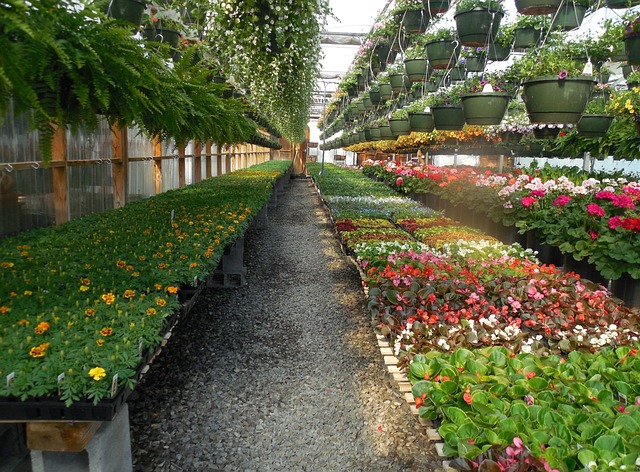All Categories
Featured
Table of Contents
Container Gardening in Cold Climates
Container gardening is not just for warm, sunny climates. Even if you live in an area with cold winters and short growing seasons, you can still enjoy the beauty and productivity of a container garden. With a little planning and the right plants, you can create a thriving garden that will bring color and life to your outdoor space year-round.
Choosing the Right Plants
When gardening in cold climates, it's essential to choose plants that are cold-hardy and can withstand freezing temperatures. Look for varieties that are labeled as suitable for your USDA hardiness zone, or even a zone colder.
Some popular cold-hardy plants for containers include:
- Evergreen Shrubs: These plants provide year-round color and interest, even in the depths of winter. Look for varieties like boxwood, holly, and arborvitae.
- Ornamental Grasses: Grasses like feather reed grass, fountain grass, and switchgrass can add texture and movement to your container garden, even when covered in snow.
- Winter Berries: Plants like holly, winterberry, and cotoneaster can provide pops of vibrant color during the winter months.
- Cold-Tolerant Vegetables: Many vegetables can withstand cold temperatures, including kale, spinach, Brussels sprouts, and Swiss chard.
By choosing plants that are adapted to your climate, you'll give your container garden the best chance of success, even in frigid conditions.
Protecting Your Containers
In cold climates, containers are susceptible to freezing and cracking. To protect your containers, use pots made from materials like fiberglass, plastic, or glazed ceramic, which are less likely to crack in freezing temperatures. Avoid using terra cotta or clay pots, as they can easily crack and break.
Additionally, you can wrap your containers in insulating materials like bubble wrap or burlap to provide an extra layer of protection against the cold. This can help to prevent the soil and roots from freezing, allowing your plants to survive and thrive.
Caring for Your Container Garden in the Winter
During the winter months, container gardens require less maintenance than during the growing season. However, it's still important to provide some care to ensure the survival of your plants.
Watering: While your plants may need less water in the winter, it's important to check the soil moisture regularly. If the soil feels dry, give your containers a thorough watering. Be sure to drain any excess water to prevent it from freezing and damaging the roots.
Protection from Extreme Cold: If you're experiencing a particularly cold snap, you may need to provide additional protection for your plants. Covering your containers with blankets or moving them to a sheltered location, such as a garage or shed, can help to shield them from extreme cold and wind.
Pruning and Cleanup: In the late fall or early winter, prune back any dead or damaged foliage from your plants. This will help to promote healthy growth in the spring and prevent the spread of disease. Additionally, remove any fallen leaves or debris from the containers to prevent pests and diseases from overwintering.
By taking these steps, you can enjoy a beautiful and thriving container garden even in the coldest months of the year. Experiment with different plants and combinations to create a winter wonderland right outside your door.
Recommended Products:

Smart Garden Guru

Container Gardening on a Budget
Container gardening is a popular and versatile way to grow plants, but it can also be expensive. However, with a little creativity and resourcefulness, you can create a stunning container garden on a budget. One cost-effective option is to repurpose items you already have around the house. For example, an old wooden crate or a discarded tire can be transformed into a unique and charming container for your plants. You can also use items like buckets, tin cans, or even plastic bottles as planters. Just make sure to punch holes in the bottom for drainage. Another way to save money on container gardening is to choose plants that are affordable and easy to grow. Many annuals, such as marigolds, petunias, and impatiens, are inexpensive and provide beautiful blooms all season long. Perennials like daylilies, coneflowers, and hostas are also good options as they will come back year after year. When it comes to soil, you don't have to splurge on expensive potting mixes. Instead, you can make your own by mixing compost, soil, and perlite or vermiculite. This homemade mix will provide the necessary nutrients and drainage for your plants to thrive. Lastly, consider joining a plant swap or community gardening group. These groups often gather to exchange plants and gardening tips, allowing you to expand your plant collection without spending a fortune. By getting creative, choosing affordable plants, making your own soil mix, and joining gardening communities, you can create a stunning container garden without breaking the bank. So don't let a limited budget hold you back from enjoying the beauty of container gardening.Gardening Conatiner Gardening Hanging Baskets - Tips for Growing Vegetables in Containers

Fruit Trees Tips for Growing Vegetables in Containers
More about Gardening Conatiner Gardening Hanging Baskets: Most Commented
Container Gardening: Container Gardening: Beautiful Flowers at Your Fingertips
Tips for Growing Vegetables in Containers
© 2023 Gardening Container Gardening Hanging Baskets - Gardening Container Gardening Hanging Baskets All Rights Reserved.
Latest Posts
Discover St. Lucia’s Majestic Landscapes
Fluoride Exposure: What You Need to Know
Urban Oasis: Mastering Apartment Gardening Basics